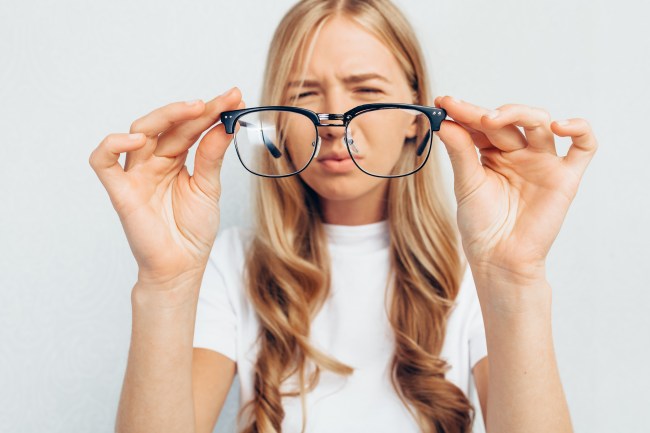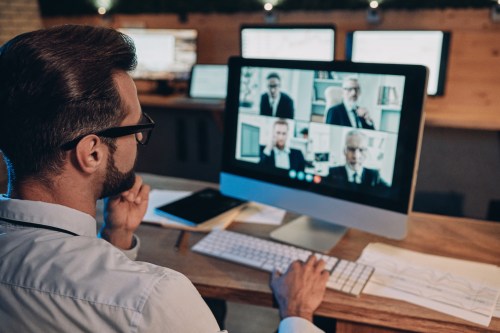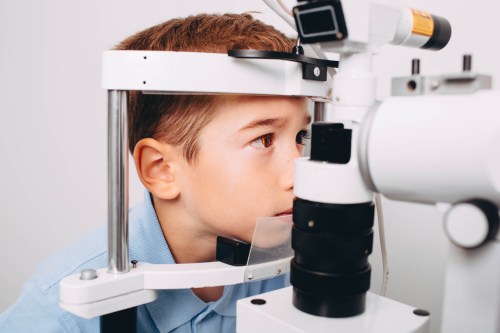Just how good
is your vision
while reading this?
#LowVisionAwarenessMonth

It’s time to open your eyes!
The irony though, is that an estimated 80% of cases suffering from poor vision can easily be treated to a great extent if they are diagnosed and treated in time.
In fact, even in the UAE, most people who suffer from glaucoma, cataracts and diabetic retinopathy are not even aware of their visual status yet.

Not paying attention to the treatment of any of these problems in the early stages, would mean living with a vision impairment that could progressively get worse and eventually impact your lifestyle, across any age. These could range from poor performance at school owing to refractive errors (quite common among students), and difficulty in discharging duties among adults at the workplace owing to constant deterioration in eyesight.
In 2020, a global report revealed that about 600,000 people suffer from visual impairment in the UAE, out of which about + 20,000 people were totally blind. These numbers may well be going up even as we speak, given the poor attention on the subject.
Is Technology to blame for low vision?

A leading ophthalmologist in the UAE, has pointed out that a large part of eye disorders such as refractive errors, occur at a school-going age due to a phenomenon called ‘digital eye strain’. It’s an apt term, given the number of children who can’t seem to take their eyes off multiple screens, especially laptops, mobile phones and TVs.
A large part of what speeded up these habits can be blamed on the pandemic, which unfortunately, forced children indoors for safety but ironically ended up doing more harm than good to their eye health. Apart from studies, the only ‘leisure activity’ available was indoor screen-gaming, extended zoom calls, and prolonged and harmful binging on Netflix.
The result: less physical activity contributing to increased weight gain and more digital screentime causing ‘digital eye strain’. Add to that, the harsh summer heat in the UAE that doubly contributes to children preferring more time to spend indoors.
In fact, 7 out of 10 children in outpatient treatments suffered from myopia and would seriously require special glasses, preferably with anti-reflective coating or contact lenses to avoid eye strain. There are even special eyeglasses for the visually impaired.
Common causes and types of low vision:
- Macular degeneration: Also referred to sometimes as ‘AMD’, it involves the weakening of the macula owing to old age and causing blurred vision which could require macular degeneration reading devices.
- Glaucoma: This is a disorder involving optic nerve damage and would need advanced glaucoma treatment. However, it is asymptomatic.
- Ambylopia: Also known as ‘Lazy Eye’, it is marked by a reduction of vision in one eye, caused by an unequal vision between the eyes and the effect of poor image projection on the brain.
- Trauma: Physical damage to the eye can severely damage and alter vision.
- Diabetic Retinopathy: This occurs in longstanding diabetics with poor control and growth of abnormal blood vessels in the retina which can result in gross diminution of vision and requires urgent eye disease treatment.
- Cataracts: A clouding of the lens in the eye that causes blurred vision and would require eye cataract treatment and check-ups (the earlier you get this done, the better you stay prepared).
- Retinitis Pigmentosa: When the rods and cones of the retina in the back of your eye (retina) are damaged leading to poor peripheral and night vision.
How can you overcome low vision?

Check your sugar! Did you know that chronic issues such as diabetes are among the leading causes of vision loss? The good news is that 90% of blindness caused by this dreaded disease is preventable. By monitoring your blood sugar levels, pressure and cholesterol with the help of our team of doctors at HealthHub Clinics, you can help prevent low vision from taking over, through care such as diabetic retinopathy treatment.
- Check your family’s eye health history. You have a better chance of knowing if you’re at risk of an eye disorder by studying your family’s health history to know if any of your family members have been diagnosed with a hereditary eye disease. It can help you stay alert on the future risks of an eye condition.
- A good diet = good sight. Dark leafy greens from spinach to kale and broccoli and of course, carrots are always good for your eye health. There are also good eye health benefits from eating fish such as salmon, tuna, and halibut that are high in omega-3 fatty acids.
- Your weight matters to your eyes. It’s all related. Being obese or overweight increases your chances of developing diabetes and other chronic disorders conditions, which in turn can lead to diabetic retinopathy or glaucoma. Start with talking to our endocrinologists at HealthHub Clinics for your diabetic retinopathy treatment, as they can help you draw up an efficient exercise plan to shed those kilos.
- Protective eyewear please! A lot of times we take our eye health for granted, especially when playing outdoor sports or at home during cooking or even at work where the hazards of your eyes being exposed to foreign objects are higher. Wearing safety glasses, low vision glasses, goggles or eye guards and even low vision aids for reading that provide the right protection are highly recommended.
- Smoking destroys vision. Don’t watch your eyes go up in smoke! We mean it. Smoking is bad news for your eyes apart from being the deadliest cancer for your lungs. Studies show that chain smokers end up with age-related macular degeneration, cataract, and optic nerve damage, all of which can cause blindness.
- Shades are cool for eye health too! To get right down to the basics, using sunglasses isn’t just a fashion statement, its’ main role is to shield your eyes from the sun’s harsh UV rays.
- Try the 20-20-20 eye rule! Sometimes we get so involved with our work and so caught up looking at our laptop screens, we forget to look away every now and then. That’s when our eyes start straining and watering. To avoid this from happening, it’s a good idea to try the 20-20-20 rule, which involves looking away every 20 minutes, 20 feet in front of you and for 20 seconds.
- Keep your contact lenses clean. To avoid eye infection, make sure you wash your hands thoroughly before putting in or taking out your contact lenses. Care must be taken to always disinfect contact lenses.
Article reviewed by:
Dr. Rakesh Maggon, Specialist Ophthalmologist, HealthHub Clinic







